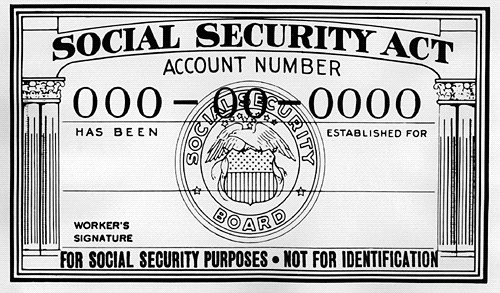Popular Posts
Thinking about retirement begins for most people in their 40s or, perhaps, 50s. Yet investing and planning for your retirement has been under way far longer.
You begin to save and invest for retirement starting with your first job, based on Social Security and Medicare taxes taken out of your paychecks.
It’s not that much money, really, and your employer pays half. But it has the amazing advantage of time. Since you’ve been saving for decades already, your money has been quietly building in the background for you.

Yes, there are problems with how Social Security has been managed, but that doesn’t mean there’s nothing there for you. How much is there is easily accessible information, and it could affect how you invest the rest of your money, say in a 401(k) or IRA.
If, for instance, you knew you already had $1 million in the bank, would you be as worried about the ups and downs of the stock market today? Probably not.
The typical middle-income couple can expect to pull up to $40,000 a year from Social Security in retirement, if they delay taking the money and plan carefully.
If you think about it, it would take $1 million in a portfolio to generate a 4% “safe” return of $40,000 annually.
Now consider how your privately invested money is being managed. Do you have a portfolio that’s 40% bonds? More?
If so, your total investment position—including your Social Security money as part of the investment picture—is far more than 40% bonds. It’s definitely more than half.
Is that an appropriate investment process for a person in his or her 40s? If you had 30 or 40 more years to live, a bond-heavy portfolio might be more of a risk than you think.
Inflation never stops. It speeds up and slows down, but it never stops. You need your money to grow and compound at a rate faster than inflation.
A long-term bond portfolio, meanwhile, is simply trying to match inflation while lowering the volatility of your investments. It’s a security blanket, not a growth investment.
Do yourself this favor, as soon you have a clear weekend day. Go to the Social Security website at SSA.gov and register. You will have to enter your Social Security number and identify yourself by picking out past addresses or similar information.
Once you do, from there you can see exactly what the government projects you will earn at different retirement ages. The longer you wait, the more you will collect.
If you’re married, run your spouse’s numbers. Add them up and multiply by 12 to find your annual income projection.
Once you know that, you can backwards calculate the size of that investment on your behalf. Chances are, it’s a bigger number than you might guess, and it is effectively a bond investment.
Doing this exercise once a year might change your ideas about your other investment accounts and lead you to adjust them accordingly as well. It might even change your idea of when to retire.